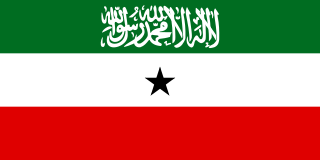
Somaliland, officially the Republic of Somaliland, is an unrecognised state in the Horn of Africa, recognised internationally as de jure part of Somalia. It is located in the southern coast of the Gulf of Aden and bordered by Djibouti to the northwest, Ethiopia to the south and west, and Somalia to the east. Its claimed territory has an area of 176,120 square kilometres (68,000 sq mi), with approximately 5.7 million residents as of 2021. The capital and largest city is Hargeisa. The Government of Somaliland regards itself as the successor state to British Somaliland, which, as the briefly independent State of Somaliland, united from 1960 to 1991 with the Trust Territory of Somaliland to form the Somali Republic.
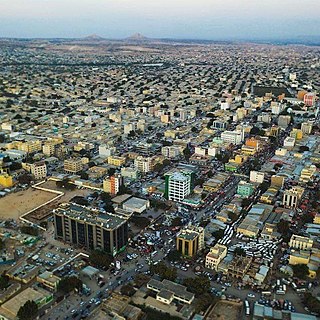
Hargeisa is the capital and largest city of the self-declared Republic of Somaliland, a de facto sovereign state in the Horn of Africa, still considered internationally to be part of Somalia. It is also the regional capital of the Maroodi Jeex province of Somaliland.
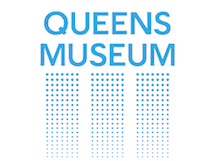
The Queens Museum, formerly the Queens Museum of Art, is an art museum and educational center located in Flushing Meadows–Corona Park in the borough of Queens in New York City, United States. The museum was founded in 1972, and has among its permanent exhibitions, the Panorama of the City of New York, a room-sized scale model of the five boroughs originally built for the 1964 New York World's Fair, and repeatedly updated since then. It also has a large archive of artifacts from both the 1939 and 1964 World's Fairs, a selection of which is on display.

Burao, also spelt Bur'o or Bur'ao, is the capital of the Togdheer region and the second largest city in somaliland. Burao was the site of the declaration of an independent Somaliland on 18 May 1991.

The Isaaq is a major Somali clan family. It is one of the largest Somali clan families in the Horn of Africa, with a large and densely populated traditional territory.

Ahmed Mohamed Mohamoud "Silanyo" is a Somaliland politician who was President of Somaliland from 2010 to 2017. He is a long-time member of the government, having served as Minister of Commerce of the Somali Republic, and among other Cabinet positions. During the 1980s, he also served as the Chairman of the Somali National Movement.

Foreign relations of the Republic of Somaliland are the responsibility of the Ministry of Foreign Affairs of the Republic of Somaliland. The region's self-declaration of independence remains unrecognised by the international community.
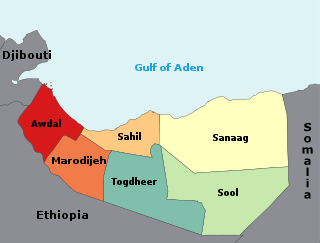
The regions of Somaliland is divided into six administrative regions, Awdal, Sahil, Maroodi-Jeeh, Togdheer, Sanaag and Sool. These are in turn subdivided into twenty-two districts. Regions of Somaliland are the primary geographical divisions through which Somaliland is administered. A distinction is made between districts of grades A, B, C and D, with the classification being based on population, area, economy and production.
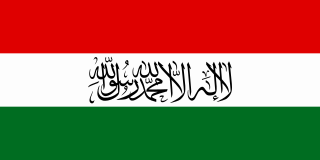
The Somali National Movement was one of the first and most important organized guerilla groups and Mujahideen groups that opposed the Siad Barre regime in the 1980s to the 1990s, as well as being the main anti-government faction during the Somaliland War of Independence. The organisation was founded in London, England, on April 6, 1981 by Hassan Isse Jama, Hassan Adan Wadadid, and Ahmed Mohamed Gulaid and other former Somali diplomats, who stated that initially the group's purpose was to overthrow the Siad Barre regime.

The University of Hargeisa is a public university located in Hargeisa, the capital of Somaliland. The institution was founded in 1998. It is the leading and largest higher education institution in the country and provides a wide range of undergraduate and postgraduate courses in different fields.

Abaarso School of Science and Technology (Abaarso School) is a non-profit, co-educational boarding school in Abaarso, located in Maroodi Jeex, Somaliland. Its campus lies 18 km (11 mi) west of the provincial capital of Hargeisa. Abaarso was only a secondary school until 2013, when it first began to run an intermediate school as well. The school now ranges from grades 7-12, with a post-graduate option. There are approximately 120 students in the upper school and 98 in the lower school.

The National Museum of Somalia is a national museum in Mogadishu, the capital of Somalia. It was established in 1933 by the colonial authorities in Italian Somaliland. After shutting down operations in 1991, it later reopened, and presently houses a number of important historical artifacts. In September 2019, the museum was rebuilt; almost 30 years after its destruction.

The Hargeisa War Memorial is a monument in Hargeisa, the capital of Somaliland. The memorial was set up to commemorate the war for independence in the 1980s, and is a symbol of struggle for the people of Somaliland.
Amasya Museum, also known as Archaeological Museum of Amasya, is a national museum in Amasya, northern Turkey, exhibiting archaeological artifacts found in and around the city as well as ethnographic items related to the region's history of cultural life. Established in 1958, the museum owns nearly twenty-four thousand items for exhibition belonging to eleven historic civilizations.
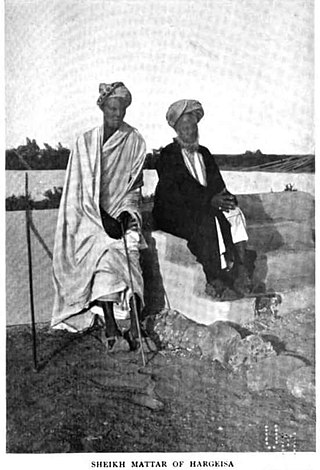
Madar Ahmed Shirwac, better known as Sheikh Madar was a 19th-century Somali political/religious leader, a social reformer, merchant and a jurist that was instrumental in the modern foundation of Hargeisa. He hailed from the Yunis Nuh division of the wider Sacad Muuse Habr Awal Isaaq clan. His tomb is now a venerated Sufi shrine in the city.

The Isaaq Sultanate was a Somali kingdom that ruled parts of the Horn of Africa during the 18th and 19th centuries. It spanned the territories of the Isaaq clan in modern-day Somaliland and Ethiopia. The sultanate was governed by the Rer Guled branch of the Garhajis clan and is the pre-colonial predecessor to the modern Republic of Somaliland.

The Somaliland National Army, is the land force and largest branch of the Somaliland Armed Forces is based in the Somaliland capital of Hargeisa. There are approximately under 100,000 active members. The Somaliland National Army is composed entirely of professionals and volunteers due to the army not being mandatory of conscription. Some Somaliland battalions operate near the Puntland border due to a border dispute.

The Somaliland War of Independence was a rebellion waged by the Somali National Movement (SNM) against the ruling military junta in Somalia led by General Siad Barre lasting from its founding on 6 April 1981 and ended on 18 May 1991 when the SNM declared what was then northern Somalia independent as the Republic of Somaliland. The conflict served as the main theater of the larger Somali Rebellion that started in 1978. The conflict was in response to the harsh policies enacted by the Barre regime against the main clan family in Somaliland, the Isaaq, including a declaration of economic warfare on the clan-family. These harsh policies were put into effect shortly after the conclusion of the disastrous Ogaden War in 1978.
The 1988 Hargeisa-Burao offensive was a major offensive conducted during the Somaliland War of Independence in May 1988 by the Somali National Movement on the cities of Hargeisa and Burao, then the second and third largest cities of Somalia. The SNM captured Burao on 27 May within two hours, while the SNM entered Hargeisa on 29 May, overrunning most of the city apart from its airport by 1 June. During the offensive the Somali National Army committed gross human rights violations, including attacking the civilian population using heavy artillery and tanks.

The 2022 Waheen Market fire was a fire that took place in Hargeisa in the self-proclaimed nation of Somaliland on 1 April 2022. While there were no deaths, damages from the fire amounted to around USD $2 billion, or 60% of Somaliland's GDP.


















